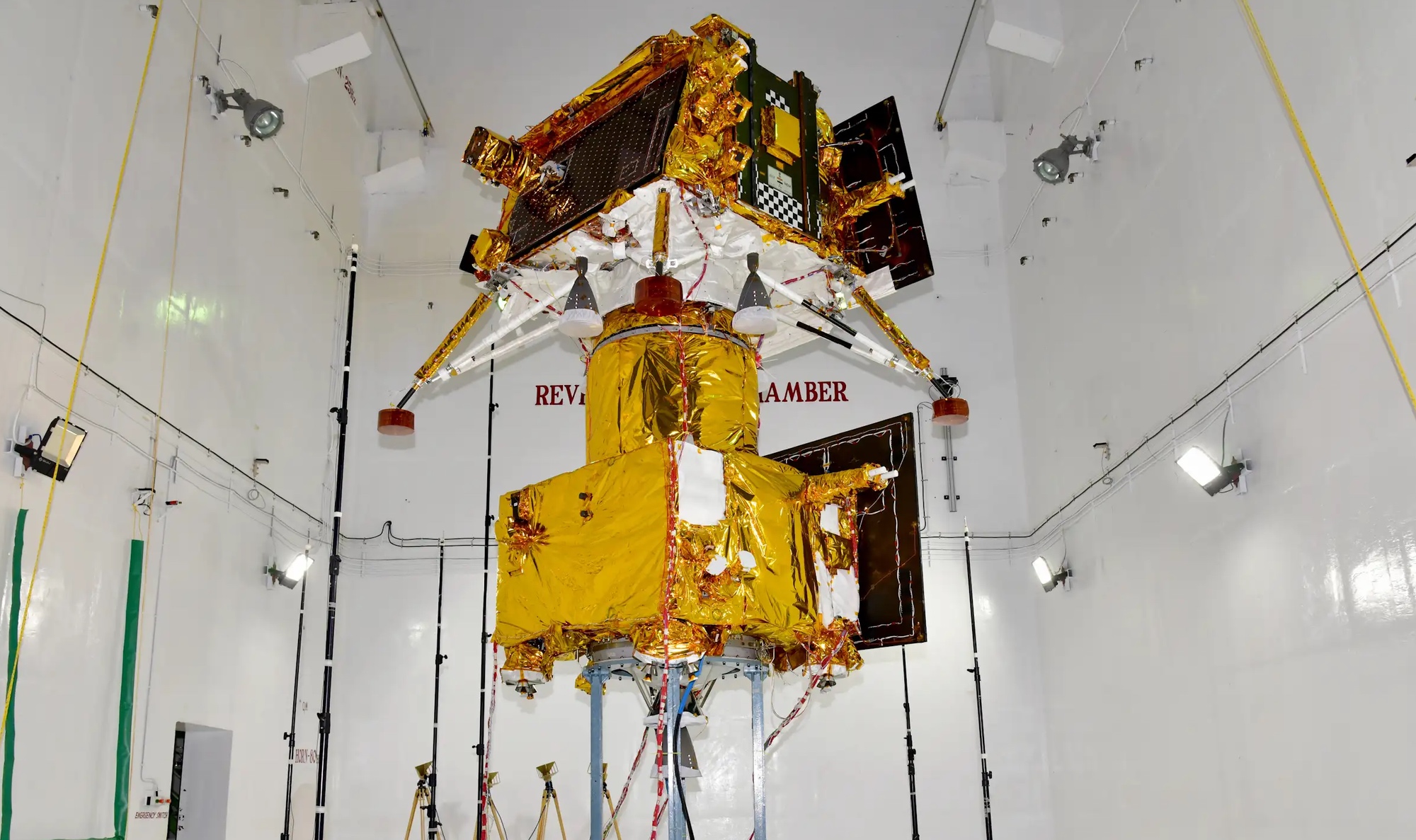WASHINGTON – The spacecraft that carried the Chandrayaan-3 lander to the moon has returned to Earth orbit, in a demonstration of technologies to support a future Indian mission to return a sample from the moon.
The Chandrayaan-3 mission’s propulsion module is now in high Earth orbit after a series of maneuvers since October that returned the spacecraft from low lunar orbit, Indian space agency ISRO announced on December 4. ISRO has not previously disclosed any efforts to return the propulsion module to Earth orbit.
The main purpose of the 2,145-kilogram propulsion unit was to transfer the Chandrayaan-3 lander from a primary elliptical Earth orbit to a low lunar orbit. The module, a modified version of ISRO’s I-3K satellite bus, performed several maneuvers starting the day after its launch on July 14 to raise the apogee into the orbit, followed by a trans-lunar injection burn and a lunar orbit insertion burn. The module moved into a nearly circular orbit 150 kilometers above the Moon before the lander separated on August 17.
The lander successfully landed on the moon’s surface on August 23. The propulsion module remained in orbit, where it operated a single instrument called Spectroscopic Habitable Planet Polarimetry, or SHAPE, to observe Earth. ISRO provided little information about the propulsion module after the lander separated.
in statementISRO said it decided to attempt to return the propulsion unit to Earth orbit after confirming that the launch accuracy and previous maneuvers had left more than 100 kilograms of propellant on the spacecraft. The first maneuver in that plan took place on October 9, raising the high point in its orbit around the moon from 150 to 5,112 kilometers.
The module performed a trans-Earth injection maneuver on October 13, setting it on a path where it would make four close approaches to the Moon before leaving its sphere of influence on November 10. The spacecraft entered a high orbit around Earth, making its first perigee on November 22 at an altitude of 154,000 km.
ISRO said the maneuver allowed SHAPE to continue observation operations near Earth. She added that the maneuvers were designed to “extract additional information for future lunar missions and demonstrate mission operating strategies for a sample return mission.”
ISRO has not officially announced plans for a lunar sample return mission. Its next mission to the Moon is the Lunar Polar Exploration Mission, or LUPEX, a joint effort with the Japanese space agency JAXA. This mission, sometimes called Chandrayaan-4, will pair a Japanese rover with an Indian lander to explore the moon’s south polar region. It is expected to be launched no later than 2026.
However, ISRO officials have discussed the possibility of sending a sample return mission in the near term. “The government of India has given us a very tight timeline for space exploration. We need a sample return,” Shri M. Sankaran, director of ISRO’s Aur Rao Satellite Centre, said during a panel discussion at the AIAA’s ASCEND conference on October 24 in Las Vegas. from the Moon in about four years.”
He was apparently referring to the ISRO leadership meeting chaired by Indian Prime Minister Narendra Modi on October 17. launch The Prime Minister’s Office mentioned goals that include establishing an Indian space station by 2035 and landing an Indian crew on the moon by 2040, but did not discuss the return of a lunar sample.
In a later presentation at the conference, he said that the Indian Space Research Organization had developed a concept for a sample return mission, but he did not go into detail about it. “The return of this sample and the LUPEX mission with the Japan Aerospace Exploration Agency will probably occur almost simultaneously,” he said.
The return of the propulsion module to Earth orbit was not the first demonstration of the techniques needed to return a lunar sample aboard Chandrayaan-3. In the final days of its operations on the lunar surface in September, the spacecraft restarted its engines and rose about 40 centimeters from the surface before landing 30 to 40 centimeters from its original landing site. “This ‘beginning’ sparks excitement for the future return of human specimens and missions!” ISRO to publish On social media.
Related

“Extreme travel lover. Bacon fanatic. Troublemaker. Introvert. Passionate music fanatic.”







More Stories
A fossilized creature may explain a puzzling drawing on a rock wall.
MrBeast Sued Over ‘Unsafe Environment’ on Upcoming Amazon Reality Show | US TV
Watch comets Lemmon and SWAN approach Earth today